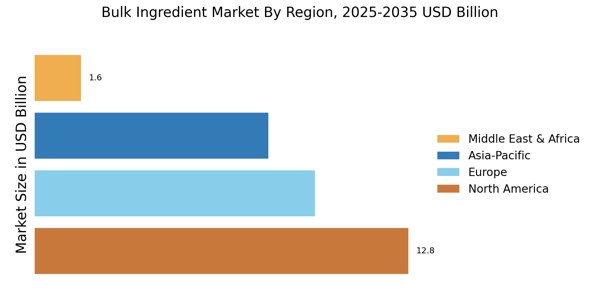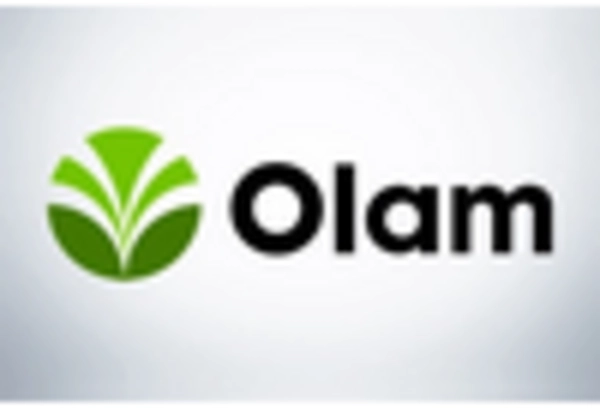Innovations in Food Technology
The Bulk Ingredient Market is witnessing a wave of innovations in food technology, which are transforming the way ingredients are sourced, processed, and utilized. Advances in extraction and processing techniques are enabling manufacturers to create more efficient and sustainable ingredient solutions. For instance, the development of enzyme technology has improved the functionality of bulk ingredients, enhancing their application in food products. Furthermore, the integration of artificial intelligence and automation in ingredient production is streamlining operations and reducing waste. These technological advancements are likely to bolster the Bulk Ingredient Market, as they provide opportunities for enhanced product quality and sustainability.
Regulatory Changes and Compliance
The Bulk Ingredient Market is influenced by evolving regulatory frameworks that govern food safety and ingredient sourcing. As governments implement stricter regulations to ensure consumer safety and environmental sustainability, manufacturers must adapt their sourcing and production practices accordingly. Compliance with these regulations often necessitates the use of higher-quality bulk ingredients that meet safety standards. Recent legislative changes have prompted many companies to reassess their ingredient supply chains, leading to increased demand for certified and compliant bulk ingredients. This regulatory landscape is likely to shape the Bulk Ingredient Market, as businesses strive to align with new standards while maintaining product integrity.
Expansion of Food Processing Industries
The Bulk Ingredient Market is benefiting from the expansion of food processing industries, which are increasingly seeking bulk ingredients to meet production demands. As food manufacturers strive to enhance efficiency and reduce costs, they are turning to bulk purchasing of essential ingredients such as sweeteners, preservatives, and emulsifiers. Recent statistics indicate that the food processing sector is expected to grow steadily, with a projected market size reaching several billion dollars by the end of the decade. This growth is likely to drive the Bulk Ingredient Market, as suppliers respond to the heightened demand for high-quality, cost-effective ingredients that can be utilized in various food applications.
Increased Focus on Clean Label Products
The Bulk Ingredient Market is responding to the growing consumer demand for clean label products, which emphasize transparency and simplicity in ingredient lists. As consumers become more discerning about what they consume, manufacturers are compelled to reformulate products using recognizable and natural ingredients. This trend is reflected in the rising popularity of bulk ingredients that are free from artificial additives and preservatives. Market data suggests that the clean label segment is expanding rapidly, with consumers willing to pay a premium for products that align with their health and wellness values. Consequently, the Bulk Ingredient Market is likely to see a shift towards sourcing and supplying cleaner, more natural ingredients.
Rising Demand for Plant-Based Ingredients
The Bulk Ingredient Market is experiencing a notable shift towards plant-based ingredients, driven by increasing consumer awareness regarding health and sustainability. As more individuals adopt vegetarian and vegan diets, the demand for plant-based proteins, fibers, and other ingredients is surging. According to recent data, the plant-based food sector is projected to grow at a compound annual growth rate of over 10% in the coming years. This trend is not only reshaping consumer preferences but also influencing manufacturers to innovate and diversify their product offerings. Consequently, the Bulk Ingredient Market is likely to see a significant increase in the availability of plant-derived ingredients, catering to the evolving dietary choices of consumers.


















Leave a Comment